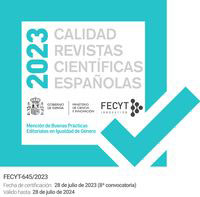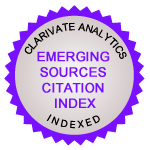Grendel’s Mere, Beowulf’s Dive, and the Visio Sancti Pauli
DOI:
https://doi.org/10.14198/raei.26402Keywords:
Beowulf, Old English poetry, Medieval Latin literature, Source studies, Visio Sancti PauliAbstract
According to Hrothgar’s account of Grendel’s mere, every night one can see there fȳr on flōde, a phrase often translated as ‘fire on the water’. This fire, which the king describes as a nīðwundor (a dreadful wonder), has traditionally been seen by scholars as a supernatural phenomenon that contributes to the presentation of the place as eerie. Geoffrey Russom and Christopher Abram have taken an alternative view: they argue that the phrase means ‘fire in/within the water’ and interpret it in two different ways. Russom believes that Grendel’s mere is an entrance to hell, and that fȳr on flōde refers to gleams of infernal light showing through the water. Abram, on the other hand, thinks that it is a kenning-like expression to refer to light emanated from the treasures lying within the monsters’ hall. This essay agrees with them that the phrase means ‘fire in the water’, but it argues that the reference is to the ordinary fire burning within the hall (mentioned in 1516b). The essay proposes that the poet took the motif of the fiery river from a vernacular version of the Visio Sancti Pauli (long thought to be among the poet’s sources) and rationalized it as an ordinary fire misconstrued by Hrothgar as a supernatural wonder, thereby playing with the audience’s expectations. The piece concludes by exploring the implications of its argument for two long-standing interpretative cruces in the poem: Hrothgar’s gaze at the gigantic sword hilt and Beowulf’s supposed ability to dive for hours on end.
Funding
Spanish State Research Agency (AEI) – Ramón y Cajal programme (RYC2022-035374-I).References
ABBETMEYER, C. 1903. Old English Poetical Motifs Derived from the Doctrine of Sin. New York: Lemcke & Buechner.
ABRAM, Christopher. 2010. “New Light on the Illumination of Grendel’s Mere.” JEGP 109: 198–216. https://doi.org/10.1353/egp.0.0135
BATTLES, Paul, trans. 1996. The Christian Elements in Beowulf, by Frederick Klaeber. Kalamazoo, MI: The Medieval Institute.
BINTLEY, Michael. 2020. “Hrinde Bearwas: The Trees at the Mere and the Root of All Evil in Beowulf.” JEGP 119: 309–326. https://doi.org/10.5406/jenglgermphil.119.3.0309
BOLINTINEANU, Alexandra. 2016. “Declarations of Unknowing in Beowulf.” Neophilologus 100: 631–647. https://doi.org/10.1007/s11061-015-9472-2
BRANDES, Herman, ed. 1885. Visio S. Pauli: ein Beitrag zur Visionslitteratur mit einem deutschen und zwei lateinischen Texten. Halle: Max Niemeyer.
BURLIN, Robert B., and Edward B. Irving, Jr., eds. 1974. Old English Studies in Honour of John C. Pope. Toronto: University of Toronto Press. https://doi.org/10.3138/9781442632714
COLGRAVE, Bertram, ed. and trans. 1956. Felix’s Life of Saint Guthlac. Cambridge: Cambridge University Press.
CRAMP, Rosemary J. 1957. “Beowulf and Archaeology.” Medieval Archaeology 1: 57–77. https://doi.org/10.1080/00766097.1957.11735382
CRONAN, Dennis. 1997. “The Origin of Ancient Strife in Beowulf.” NOWELE 31–32: 57–68. https://doi.org/10.1075/nowele.31-32.06cro
CRONAN, Dennis. 2017. “Hroðgar and the Gylden Hilt in Beowulf.” Traditio 72: 109–132. https://doi.org/10.1017/tdo.2017.3
DAVIDSON, H. R. Ellis. 1962. The Sword in Anglo-Saxon England: Its Archaeology and Literature. Oxford: Clarendon Press.
DI PAOLO HEALEY, Antonette, ed. 1978. The Old English Vision of St. Paul. Cambridge, MA: The Mediaeval Academy of America.
DWYER, M. E. 1988. “An Unstudied Redaction of the Visio Pauli.” Manuscripta 32: 121–138. https://doi.org/10.1484/J.MSS.3.1269
FOLEY, John Miles, ed. 1987. Comparative Research on Oral Traditions: A Memorial for Milman Parry. Columbus, OH: Slavica Publishers.
FOX, Denton, and Hermann Pálsson, trans. 1974. Grettir’s Saga. Toronto: University of Toronto Press.
FRY, Donald K. 1987. “The Cliff of Death in Old English Poetry.” In Foley 1987, 213–233.
FULK, R. D., ed. and trans. 2010. The Beowulf Manuscript: Complete Texts and The Fight at Finnsburg. Cambridge, MA: Harvard University Press.
FULK, R. D. 2021. “Kennings in Old English Verse and in the Poetic Edda.” European Journal of Scandinavian Studies 51: 69–91. https://doi.org/10.1515/ejss-2020-2030
FULK, R. D., Robert E. Bjork, and John D. Niles, eds. 2008. Klaeber’s Beowulf and The Fight at Finnsburg (4th ed.). Toronto: University of Toronto Press.
GLOSECKI, Stephen O. 2007. Myth in Early Northwest Europe. Tempe, AZ: ACMRS and Brepols.
GODDEN, Malcolm, and Michael Lapidge, eds. 1991. The Cambridge Companion to Old English Literature. Cambridge: Cambridge University Press. https://doi.org/10.1017/CCOL0521374383
GREENFIELD, Stanley B. 1982. “A Touch of the Monstrous in the Hero, or Beowulf Re-marvellized.” English Studies 63: 294–300. https://doi.org/10.1080/00138388208598187
GRIFFITH, Mark. 1994. “Beowulf 1495: hwil dæges = momentum temporis?” Notes and Queries 239: 144–146. https://doi.org/10.1093/nq/41-2-144
GRIFFITH, Mark, ed. 1997. Judith. Exeter: University of Exeter Press.
IRVING, Edward B., Jr. 1968. A Reading of Beowulf. New Haven: Yale University Press.
JOHNSON, David F. 1993. “The Five Horrors of Hell: An Insular Homiletic Motif.” English Studies 74: 414–432. https://doi.org/10.1080/00138389308598873
JÓNSSON, Guðni, ed. 1936. Grettis saga Ásmundarsonar. Reykjavík: Hið íslenzka fornritafélag.
KLAEBER, Fr., ed. 1959. Beowulf and The Fight at Finnsburg (3rd ed). Boston: D. C. Heath.
Lapidge, Michael, ed. and trans. 2019. Bede’s Latin Poetry. Oxford: Oxford University Press.
LAWRENCE, William Witherle. 1912. “The Haunted Mere in Beowulf.” PMLA 27: 208–245. https://doi.org/10.2307/456778
MITCHELL, Bruce, and Fred C. Robinson, eds. 1998. Beowulf: An Edition with Relevant Shorter Texts. Oxford: Blackwell.
MORRIS, R., ed. 1874–1880. The Blickling Homilies. EETS OS 58, 63, 73. Reprinted as one volume, 1967. Oxford: Oxford University Press.
NEIDORF, Leonard, ed. 2014. The Dating of Beowulf: A Reassessment. Cambridge: D. S. Brewer.
NEIDORF, Leonard, and Rafael J. Pascual. 2019. “Old Norse Influence on the Language of Beowulf: A Reassessment.” Journal of Germanic Linguistics 31: 298–322. https://doi.org/10.1017/S1470542718000144
ORCHARD, Andy. 1995. Pride and Prodigies: Studies in the Monsters of the Beowulf-Manuscript. Toronto: University of Toronto Press.
ORCHARD, Andy. 2003. A Critical Companion to Beowulf. Cambridge: D. S. Brewer.
OSBORN, Marijane. 1978. “The Great Feud: Scriptural History and Strife in Beowulf.” PMLA 93: 973–981. https://doi.org/10.2307/461781
PASCUAL, Rafael J. 2014. “Material Monsters and Semantic Shifts.” In Neidorf 2014, 202–218. https://doi.org/10.1515/9781782043461-016
PASCUAL, Rafael J. 2019. “Two Possible Emendations of Beowulf 2088a.” Notes & Queries 66: 5–8. https://doi.org/10.1093/notesj/gjy183
PUHVEL, Martin. 1972. “The Deicidal Otherworld Weapon in Celtic and Germanic Mythic Tradition.” Folklore 83: 210–219. https://doi.org/10.1080/0015587X.1972.9716470
ROBINSON, Fred C. 1974. “Elements of the Marvellous in the Characterization of Beowulf: A Reconsideration of the Textual Evidence.” In Burlin and Irving 1974, 119–137. https://doi.org/10.3138/9781442632714-009
ROBINSON, Fred C. 1985. Beowulf and the Appositive Style. Knoxville: University of Tennessee Press. https://doi.org/10.1017/CCOL0521374383.008
ROBINSON, Fred C. 1991. “Beowulf.” In Godden and Lapidge 1991, 142–159.
RUSSOM, Geoffrey. 2007. “At the Center of Beowulf.” In Glosecki 2007, 225–240.
SCHRADER, Richard J. 1993. “The Language on the Giant’s Sword Hilt in Beowulf.” Neuphilologische Mitteilungen 94: 141–147.
SEDGEFIELD, W. J., ed. 1935. Beowulf Edited with Introduction, Bibliography, Notes, Glossary, and Appendices. Manchester: Manchester University Press.
SILVERSTEIN, Theodore, ed. 1935. Visio Sancti Pauli: The History of the Apocalypse in Latin together with Nine Texts. London: Christophers.
TOLKIEN, J. R. R. 1936. “Beowulf: The Monsters and the Critics.” PBA 22: 245–295.
TRISTRAM, Hildegard L. C. 1978. “Stock Descriptions of Heaven and Hell in Old English Prose and Poetry.” Neuphilologische Mitteilungen 79: 102–113.
WRIGHT, Charles D. 1993. The Irish Tradition in Old English Literature. Cambridge: Cambridge University Press. https://doi.org/10.1017/CBO9780511518829
Downloads
Statistics
Published
How to Cite
Issue
Section
License
Copyright (c) 2025 Rafael Pascual

This work is licensed under a Creative Commons Attribution-NonCommercial-ShareAlike 4.0 International License.





